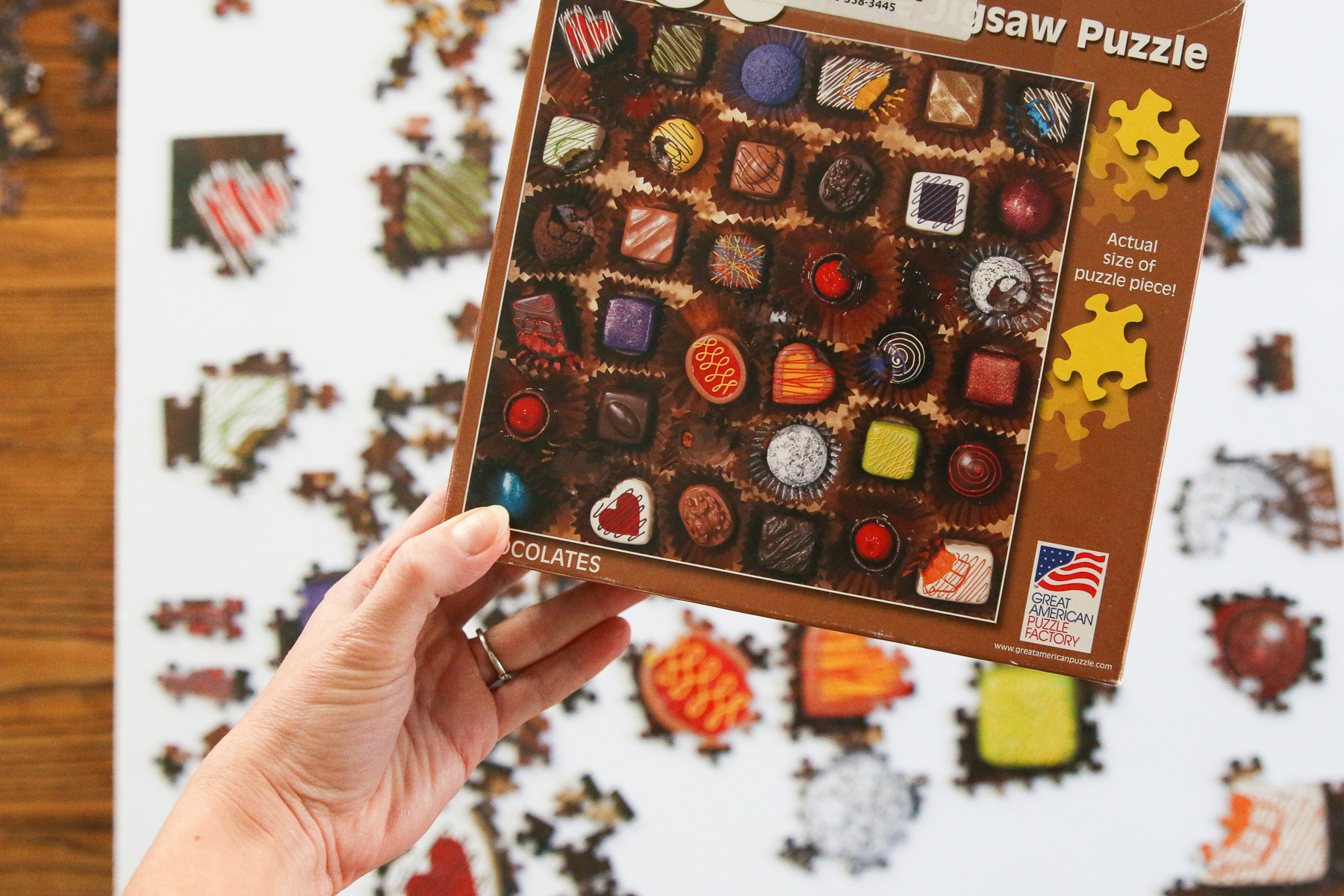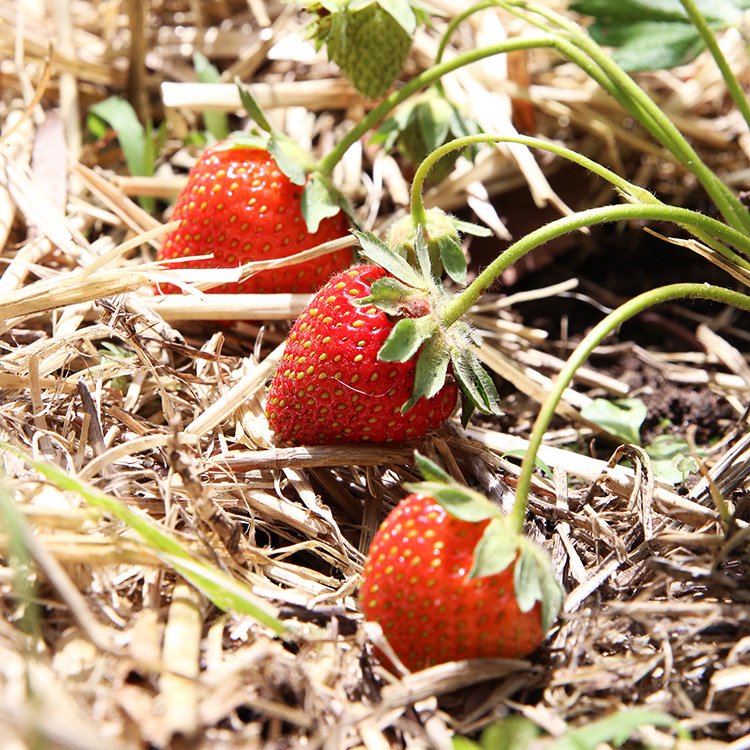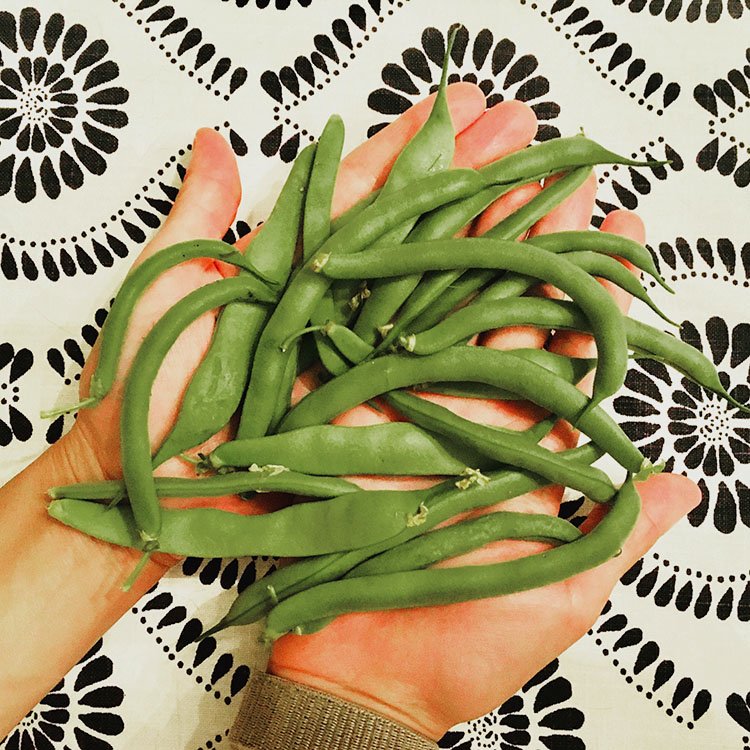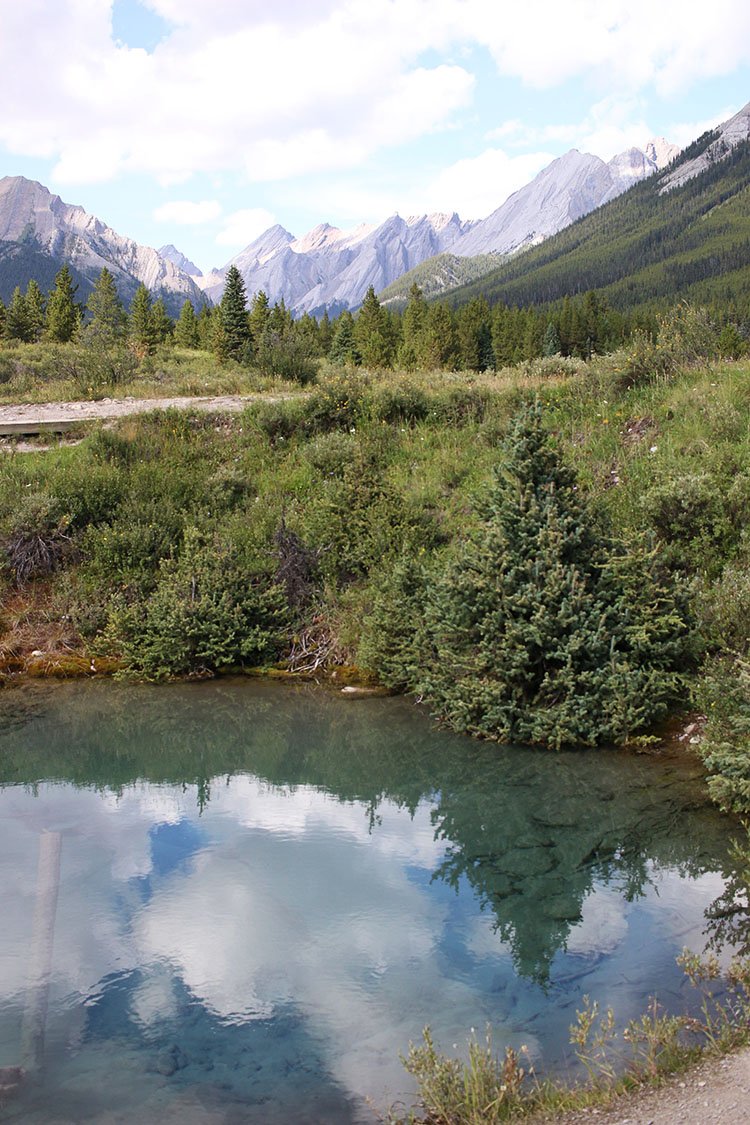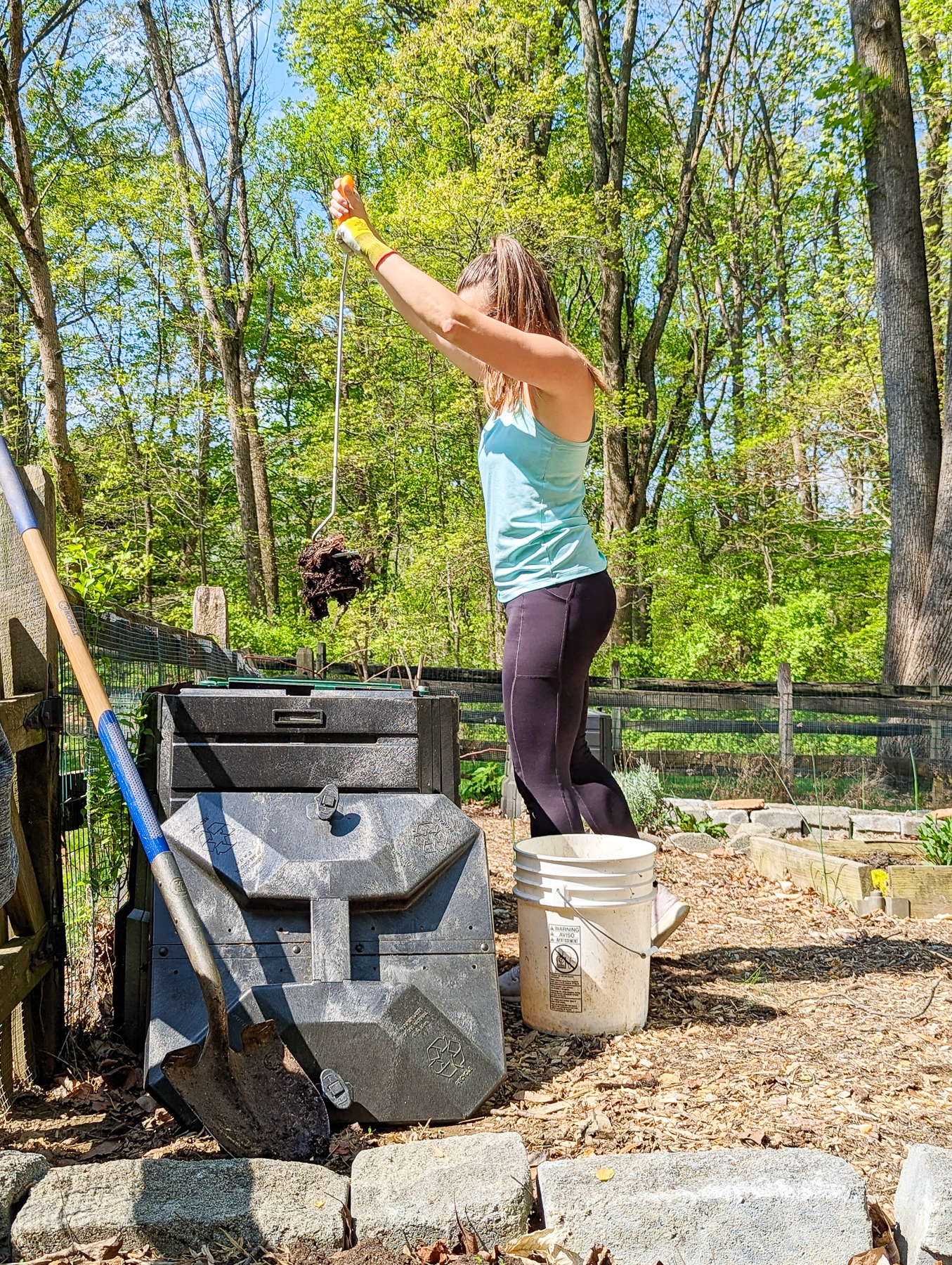25 Easy Ways to Get Started with Sustainable Living
Ready to incorporate more sustainable living habits into your everyday life but you aren’t sure where to start? Here are 25 easy ways to get started with sustainable living.
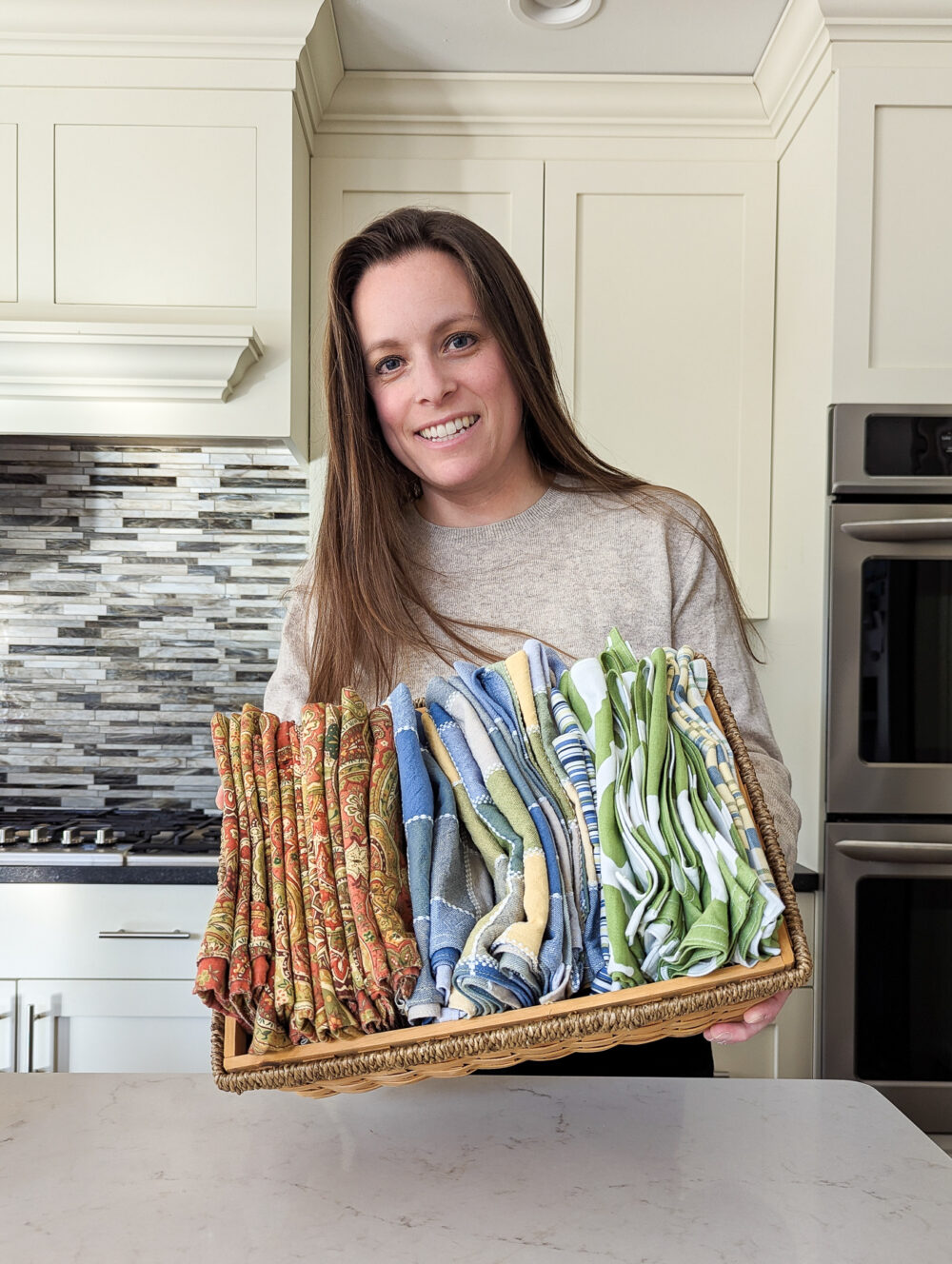
You’ve heard about this climate change thing and the idea of making changes sounds good, but it all feels too overwhelming. Where do you start?! Is it even worth it? Do individual actions make any difference?
Yes and yes. And let’s start somewhere… anywhere, and then move forward from there. You don’t need a permission slip, practice, or an expectation of perfection. You just need to do it, tiny step by tiny step.
Sustainable living is a mindest first
Here’s the thing about sustainable living that often gets overshadowed by our consumption-driven culture. Sustainable living is a mindset as much as (and probably more than) a series of lifestyle habits and swaps.
As you approach a more eco-friendly lifestyle, start with two underlying principles: Consume Less and Think Circular. Making these the leading aspects of your lifestyle and consumption habits will positively inform so many of the choices you make. It might seem daunting at first to think about these principles before buying and choosing, but I promise it becomes subconscious second nature.
Consume Less
This is pretty straightforward (and it’s good for your budget). Buy less stuff. Use, reuse, and repurpose what you already have. Buy secondhand instead of new when you can. Borrow instead of buy things you use infrequently. Be patient and thoughtful before spending money instead of falling prey to impulse purchases.
Sometimes it’s hard to resist the urge to consume in a world that tells us consumption solves all our problems (spoiler alert: excess consumption creates a lot more problems than it solves). But even if consuming less is hard, lots of hard things are worth doing. And when you lead with the idea that you don’t need “all the things” and you’re going to be more intentional about what you buy, it becomes easy (and overconsumption becomes the hard thing that’s no longer worth doing). I promise!
Think Circular
Circularity, as it relates to consumption and sustainability, is the idea that we use resources in a circular way (think reuse, recycle, upcycle, compost) instead of in a linear way (like when we buy something new, use it for a bit, and then throw in the trash where it stays basically forever). In short, resources flow in a circle, to be used and reused, instead of in a line, where they are used once and then thrown away.

Circularity and the corresponding Circular Economy are core tenets of sustainable living. The ideas can be applied in many ways and are often easy to implement. You probably already do it!
Maybe you shop secondhand which uses fewer new resources and saves you money. Maybe you’re a pro at using food scraps in new recipes so they don’t go to waste. Maybe you donate extra food to your local food pantry instead of letting it spoil. Maybe you sell or give away things that you no longer need so they get a new life in a new home. These are examples of resources moving in a circular fashion to be reused or repurposed instead of thrown in the trash after a single life.
Finding ways to live aligned with the principles of the circular economy is attainable for everyone. Because it’s a circle, you don’t have to start with consumption (i.e. what you buy). You could try new habits that focus on how you use what you already have or how you get rid of things if those changes feel easier to you. Here’s more about starting new sustainable habits with disposal first.
As a bonus, many circular habits help connect us with our neighbors and communities, often save us time and money, and bring a sense of satisfaction that we’re doing something good for ourselves and others.
Individual action matters and drives systematic change
Individual action matters because it shapes us and our priorities. It influences our family and friends. And ultimately, collective individual action is the stimulus for systematic change in our cultures, governments, institutions, and businesses.
I’m not asking you to do all. the. things. For now, I want you to choose one, two, or maybe three new sustainable habits and do those first. Let them guide your curiosity about global warming and climate action. View them through the broader principles of less consumption and circularity.
Allow those new habits to become old habits and be the cornerstones to more sustainable choices. Let them be the foundation of incorporating into your identity the idea that you are a person who prioritizes being a good steward of your community, the planet, and our collective future.
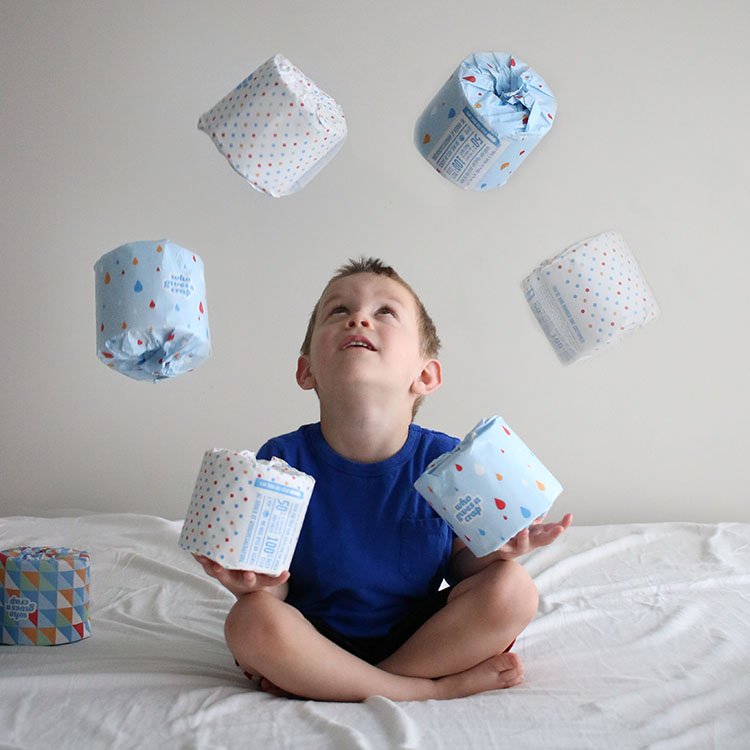
25 easy ways to get started with sustainable living
Here are some places you can consider starting. You don’t have to do all of them (and especially not all at once). Pick one or two or three that feel accessible, manageable, and maybe even exciting to you. Start there. Once those feel comfortable and engrained in your habits, try another one or two to add to your lifestyle shifts.
- Join a Buy Nothing group | Buy Nothing groups share their resources and abundance in hyperlocal gifting groups. It’s an awesome way to pass on things you no longer need, ask for things you need that your neighbors might have, and build community. Here is more information about Buy Nothing groups and how to get started.
- Sign up for a library card | Your library offers more than just books. Stop by to sign up for a library card, and you can use many of their resources remotely. Libraries are an important part of strong communities. Here are 5 ways to support your local library and why it matters.
- Use what you already have (containers, jars, linens, etc…) | Before buying fancy new “sustainable” items, look around and use what you already have. Clean and reuse glass jars instead of buying new mason jars for storage. Plastic yogurt or sour cream containers with lids store leftovers as well as fancy silver tiffins. The most sustainable things you can use are the ones you already have.
- BYO grocery bags | I know it’s easy to forget to bring bags to the grocery store sometimes, so don’t expect perfection on this. I’ve been bringing my own bags for years and forget or stop by the store on a whim while I’m out from time to time. Just do your best and bring bags as often as you can remember. Aside from remembering, the hurdles of this habit puzzle me because reusable bags are easier to carry, hold more items, and work better. They just make sense!
- BYO water bottles | For the love of the planet, please stop buying bottled water. Sure there’s a time and a place, but reusable water bottles are so much better! They keep water colder for longer. They don’t sweat. It’s less expensive. They’re just better. Save your hard-earned money and spend it on something other than a crap ton of plastic bottles filled with something you can get for free.
- Opt for time-of-use energy rates | Time-of-use energy rates apply different rates to your electricity based on the time you use it. Find out if your local utility offers time-of-use energy and see if they make sense for you. I’ve done a deep dive on TOU energy rates, how they work, and why they are better for the planet and likely your budget too.
- Start composting | Too gross? Before you write me off, I promise composting isn’t as gross as you might think. Consider a pickup service (like your trash but for food scraps) or the Reencle electric composter. Here are several resources to help you get started with a compost pickup service.
- Use food leftovers consistently | Be mindful about managing the food you already spent money on. Before shopping, when planning meals, or while indulgently searching the fridge to find something to eat, focus on the leftovers first and use them up. It saves you money and reduces the amount of food that ends up in the trash.
- Learn to repair and mend (clothes, tools, gadgets, etc…) | Whether you DIY your fixes or hire someone to do it for you, mend and repair what you already own if it still has life. Our culture prioritizes quick fixes and tossing items to replace with new ones even when we can do small repairs to fix and renew things. What a waste of resources and money.
- Shop secondhand | The stigma around secondhand is quickly fading, especially as younger people embrace the benefits of thrifting and resale. If thrift shops feel overwhelming, start with consignment boutiques, curated brick-and-mortar resale shops, or online sites with extensive filters like thredUP and Kidizen. Here are some tips for scoring sweet finds on thredUP. And this brand is my favorite online secondhand marketplace for kids’ clothes and gear.
- Shop less (for fun) | Skip shopping as a social activity. Here are 12 sustainable alternative ways to hang out with friends that aren’t shopping.
- Spend more time outside | Getting outside may not feel like a direct sustainable shift. But when we get outside and explore, we better appreciate what nature has to offer and are more likely to take care of the beauty and benefits of our planet. It’s also a lot harder to spend money without wi-fi in the woods. This past year, I did a Hike40 project that helped me get outside so much more than in the past. You can check out all the details and what prompted this personal project here.
- Drive Less | Walk more, bike more, and use public transportation more often. It’s not easy to make this switch overnight, especially in the United States where so many communities are designed to be car-centric. But keep it in mind as an option and give it a shot when it feels accessible. Here are some ways to use public transportation with kids.
- Ditch paper towels (at least mostly) | Skip paper towels and choose reusable dishtowels, Swedish dishcloths, and cloth napkins. It doesn’t feel like extra work to manage them. We have a basket in our laundry room to collect dirty towels. We throw them in with other towels when we do laundry. And I rarely have to carry large and bulky packages of paper towels home from the store. We still have some paper towels. We use about one roll every month or two. It’s totally worth it.
- Pick up litter | When you’re out for a hike or run or just when you see it, pick up litter and help keep the community a little cleaner. You may even consider making a litter pick-up date with friends, like going for a walk or hiking together to pick up trash along the way. Here are 7 tips for doing a litter pickup with friends.
- Wash your hair less often | This one is all about consuming less and making your life a little easier (especially if you’re like me and have long hair that takes forever and a day to dry). Washing hair less often uses less product and thus requires less packaging for those products. Skipping a hair wash or two allows shorter showers (which means less water usage and less energy usage to heat the water). After a couple of weeks, your hair will get used to fewer washes and produce fewer natural oils (which it typically does to replenish the oils rinsed away with frequent cleaning). Here are 5 reasons to skip your next hair wash.
- Swap to zero-waste toilet paper | Ready to skip lugging all that toilet paper home from the store. Order zero waste paper instead. If you’re lucky, you might even be able to find zero waste toilet paper brands at your regular shopping locales. I love Who Gives a Crap, and there are other great brands out there. I LOVE that it ships to our house once or twice a year in a large box, and I never have to buy or transport it home from the store. Can you tell I’m not a fan of shopping trips, especially when they’re bogged by bulky products that barely fit into the cart?
- (Pretty much) ignore “best by, sell by, and use by” dates on food products | With very few exceptions, these dates have no bearing on when a food is safe to consume. Manufacturers and grocers use them to manage inventory, and they may indicate dates when a manufacturer can guarantee that their products will be in optimal condition for taste and use. But nearly all foods are safe, nutritious, and delicious long after these dates. Use your judgment when determining when food needs to be tossed. If it still looks and smells fine, it’s most likely still good to eat. For example, I volunteer at a food pantry. We check all products for expiration dates and quality before accepting them. The pantry follows the Philabundance Food Donation Safety guidelines. The organization and its agency partners accept food long after the published “expiration dates” because the food is safe to eat. Save money and stop throwing away food still suitable for your family.
- Adjust your thermostat by one or two degrees | It might seem small, but one or two-degree adjustments on your thermostat can significantly reduce your energy usage to heat your home in the winter or cool your home in the summer. It’s better for the planet and your budget.
- Borrow before buying | We tend to buy what we need so quickly without thinking about who might be able to share their abundance with us. Especially when you’re thinking about buying large items you use infrequently like luggage, yard maintenance and power tools, or specialized kitchen gadgets, consider if you can borrow it from family, friends, or a neighbor instead of buying your own (to mostly keep it in storage…). It’s another way where sustainable living can save you a lot of money and clutter.
- Responsibly recycle batteries | Most batteries have toxic chemicals that shouldn’t go in the trash. Find appropriate recycling facilities for them. Many Target stores have battery recycling and some electronics stores have collection programs as well. You could also try battery recycling programs like this one.
- Air dry your clothes | This may not seem like a beginner tip, but hear me out, and don’t knock it ’til you try it. Our clothes dryers are often the second largest energy consumers in our homes behind our HVAC systems. If we can use them less, it can have a big impact. I really like going outside to hang dry my clothes most of the time. We have a rotary line dryer in our backyard. I hang dry about 3/4 of our clothes most of the year (and use the dryer on really cold days in the winter or when it’s raining). You don’t have to hang dry everything. Get a drying rack and try drying one load of laundry each time you do your wash. Maybe you graduate to a rotary line dryer. Maybe you’ll love it like I do. 🙂 Even if you only air dry half of your laundry loads, it’s a 50% reduction in the energy used by your power-hungry dryer.
- Swap out liquid laundry detergent | Choose laundry powder (my favorite option) or laundry sheets (if powder isn’t your thing). Liquid detergent is heavy and bulky which means it requires more plastic packaging, takes up more space in your home to store, and requires a lot more energy to transport than powder detergent or laundry sheets. Ditch the jug; you won’t regret it! Here are eight more ways to make your laundry room more sustainable.
- Grocery shop through a low waste lens | As you wander through your grocery store, choose items that have less waste (i.e. less useless packaging, bulk instead of single-serve) or will last the longest (i.e. have packaging that makes it last longer). Skip plastic produce bags (you don’t need them!). Choose recyclable or compostable packaging when it’s an option. This doesn’t mean totally changing your grocery list, just noticing and choosing alternatives in a particular category that have a more responsible environmental footprint.
- Eat more local foods (and a little less meat) | I’ll never tell you to go full-on vegan for the planet. If you want to be vegan for yourself, by all means, go for it. But I think there are too many nuances around our complex and broken food supply system to suggest that such a dietary change is a slam-dunk sustainable habit. Instead, focus on eating more local foods and a little less meat (if it’s a heavy staple in your diet). Local foods typically have smaller environmental footprints, and you’ll be a good neighbor when you support local food producers and artisans in your area. Here are a few related reads to dive deeper into this. Enough is Enough: Why Veganism Isn’t The Holy Grail of Eco-conscious Living… But Eat Less Meat and 14 Ways to Reduce Your Environmental Impact Without Giving Up Meat or Doing Meatless Monday
Bigger investments in sustainability at home
If it’s available to you, certain one-time investments can significantly reduce your environmental footprint. But they come with substantial upfront payments.
I include these here not because I think they are quick and simple swaps but because they are one-time actions that provide an ongoing and material benefit once you make the switch. If you can swing the initial investment, you’ll have a more eco-friendly home for the long haul. And many of the investments will save you serious cash on the back end. They’re gifts that keep on giving.

Electrify your home
We need to decarbonize our homes and communities (as quickly as possible). There are many ways to do that, and this guide Electrify Everything in Your Home from Rewiring America can help you determine what to prioritize in your home. It discusses upgrades like:
- Heat Pumps
- Induction Stoves
- Electric Vehicles
- Solar Panels
While these are large investments, they offer a big environmental benefit if they’re in your budget, especially when you need to replace something in one of these categories.
Buy the right size home
Especially in the United States, we tend to buy homes much larger than we need. This requires significant resources to build, maintain, heat, cool, and manage. Before buying the biggest thing your budget can afford, consider something smaller that will save you money. It’s easier to clean, less expensive to furnish, and unnecessary in many circumstances.
Conserve resources
I mentioned lowering the temperature on your thermostat, and there are additional investments that can help conserve resources throughout your home. Small changes like low-flow faucet attachments (which don’t significantly impact water pressure but reduce water usage) and LED light bulbs increase the efficiency of resources without changing your habits.
We also got a tankless water heater a few years ago. Because it heats water as you use it, it eliminates the energy used to keep water warm when it’s not being used. We have a gas-powered tankless heater because we installed it before I recognized the importance of electrifying. But if we have to replace it, I will choose an electric tankless water heater in the future.
Use native landscaping
When you’re ready to add or replace landscaping in your yard, choose native plants that will support the local ecosystem and help biodiversity thrive in your community. Homegrown National Park is a wonderful organization and offers comprehensive resources to get you started. They help you understand what native landscaping on your property might look like and why it’s important.
I shared more about how we’ve made some of these larger changes to our home over time in this post, 5 Home Ownership Decisions We Made To Save Water & Energy. We have a heat pump but haven’t invested in electric cooking yet. We looked into getting solar panels but the investment didn’t fit for us at the time. Maybe it will make more sense down the road. We have two electric vehicles despite having two boys in travel hockey, which requires a lot of long drives and road trips for games and tournaments. We’re not entirely decarbonized but we’re slowly making progress.
This list is not exhaustive
This list of ways to incorporate more sustainable living habits into everyday life is far from exhaustive. There are so many small steps that reduce waste, limit consumption, conserve resources, and are good for us and the planet.
I’d love to hear other ideas you might add to this list. What has worked for you? Or what other questions can I answer? I’d love to help you overcome your obstacles and find ways to incorporate more eco-friendly habits into your everyday.
Sign up for the newsletter (the best stuff!)
Did you find this helpful? Sign up for more eco-friendly living tips for everyday life.
I’m the creator of this site, and my favorite way to connect with others as we tackle this whole climate change thing is through my newsletter, Stepping Stones. Each week, I share tips, resources, and stories to help you translate climate conversations into actionable (and attainable!) steps at home, with a little sarcasm and snark between snippets of sustainable living chat.
I’d love for you to check it out. Drop your email below, and you’ll have loads of ideas for easy eco-friendly habits in your inbox in no time (for real, the welcome email itself is a gem of tips and tricks).

Jen Panaro
Jen Panaro, founder and editor-in-chief of Honestly Modern, is a self-proclaimed composting nerd and advocate for sustainable living for modern families. To find her latest work, subscribe to her newsletter, Stepping Stones.
In her spare time, she’s a serial library book borrower, a messy gardener, and a mom of two boys who spends a lot of time in hockey rinks and on baseball fields.
You can find more of her work at Raising Global Kidizens, an online space to help parents and caregivers raise the next generation of responsible global citizens.


